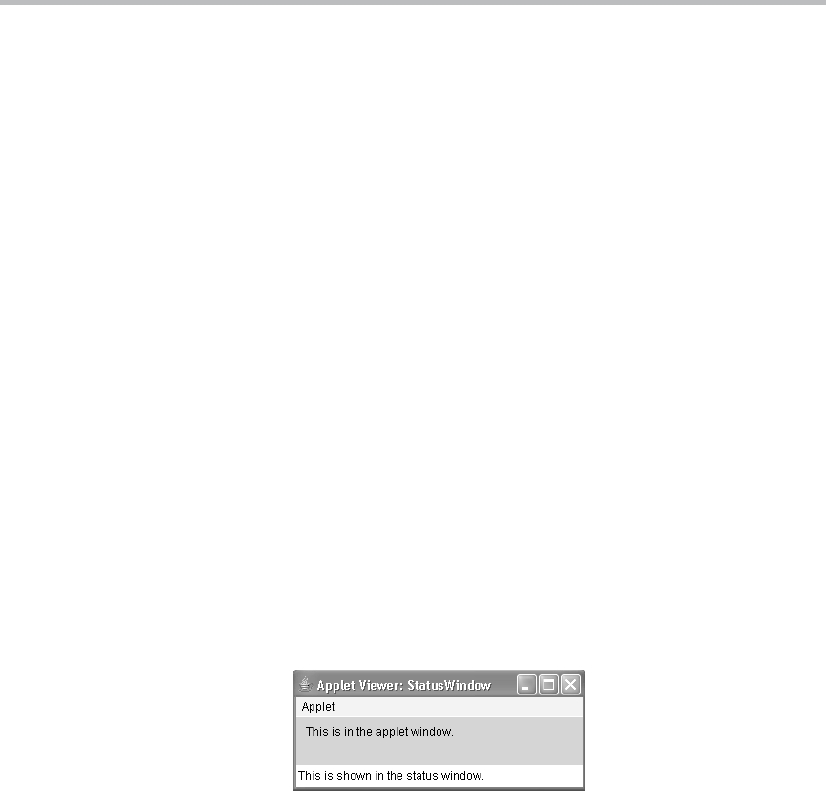Inside run( ), the characters in the string contained in msg are repeatedly rotated left.
Between each rotation, a call to repaint( ) is made. This eventually causes the paint( )
method to be called, and the current contents of msg are displayed. Between each iteration,
run( ) sleeps for a quarter of a second. The net effect of run( ) is that the contents of msg are
scrolled right to left in a constantly moving display. The stopFlag variable is checked on
each iteration. When it is true, the run( ) method terminates.
If a browser is displaying the applet when a new page is viewed, the stop( ) method is
called, which sets stopFlag to true, causing run( ) to terminate. This is the mechanism used
to stop the thread when its page is no longer in view. When the applet is brought back into
view, start( ) is once again called, which starts a new thread to execute the banner.
Using the Status Window
In addition to displaying information in its window, an applet can also output a message
to the status window of the browser or applet viewer on which it is running. To do so, call
showStatus( ) with the string that you want displayed. The status window is a good place
to give the user feedback about what is occurring in the applet, suggest options, or possibly
report some types of errors. The status window also makes an excellent debugging aid,
because it gives you an easy way to output information about your applet.
The following applet demonstrates showStatus( ):
// Using the Status Window.
import java.awt.*;
import java.applet.*;
/*
<applet code="StatusWindow" width=300 height=50>
</applet>
*/
public class StatusWindow extends Applet{
public void init() {
setBackground(Color.cyan);
}
// Display msg in applet window.
public void paint(Graphics g) {
g.drawString("This is in the applet window.", 10, 20);
showStatus("This is shown in the status window.");
}
}
Sample output from this program is shown here:
Search WWH :


